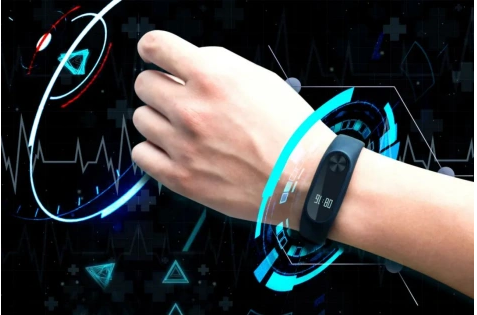A fundamental breakthrough in stretchable inductor design by researchers at the University of Science and Technology of China addresses a critical barrier in smart wearables: maintaining consistent inductive performance during movement. Published in Materials Today Physics, their work establishes aspect ratio (AR) as the decisive parameter for controlling inductive response to mechanical strain.
By optimizing AR values, the team engineered planar coils achieving near strain invariance, demonstrating less than 1% inductance change under 50% elongation. This stability enables reliable wireless power transfer (WPT) and NFC communication in dynamic wearable applications. Simultaneously, high-AR configurations (AR>10) function as ultra-sensitive strain sensors with 0.01% resolution, ideal for precision physiological monitoring.
Dual-Mode Functionality Realized:
1. Uncompromised Power & Data: Low-AR coils (AR=1.2) exhibit exceptional stability, limiting frequency drift in LC oscillators to just 0.3% under 50% strain – significantly outperforming conventional designs. This ensures consistent WPT efficiency (>85% at 3cm distance) and robust NFC signals (<2dB fluctuation), critical for medical implants and always-connected wearables.
2. Clinical-Grade Sensing: High-AR coils (AR=10.5) serve as precision sensors with minimal cross-sensitivity to temperature (25-45°C) or pressure. Integrated arrays enable real-time tracking of complex biomechanics, including finger kinematics, grip force (0.1N resolution), and early detection of pathological tremors (e.g., Parkinson’s disease at 4-7Hz).
System Integration & Impact:
These programmable inductors resolve the historic trade-off between stability and sensitivity in stretchable electronics. Their synergy with miniaturized Qi-standard wireless charging modules and advanced circuit protection (e.g., resettable fuses, eFuse ICs) optimizes efficiency (>75%) and safety in space-constrained wearable chargers. This AR-driven framework provides a universal design methodology for embedding robust inductive systems into elastic substrates.
Path Forward:
Combined with emerging technologies like intrinsically stretchable triboelectric nanogenerators, these coils accelerate development of self-powered, medical-grade wearables. Such platforms promise continuous, high-fidelity physiological monitoring coupled with unwavering wireless communication – eliminating dependence on rigid components. Deployment timelines for advanced smart textiles, AR/VR interfaces, and chronic disease management systems are substantially shortened.
This work transitions wearable electronics from compromise to synergy,” stated the lead researcher. “We now concurrently achieve lab-grade sensing and military-grade reliability in truly skin-conformal platforms.”
Post time: Jun-26-2025

